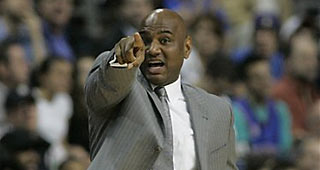As the NBA’s Vice President of Basketball Operations, Michael Curry was responsible for enhancing the D-League and cultivating a dynamic minor league system. His vision included commissioning franchises to accept ownership of minor league teams and developing high performing basketball players. Recognizing a need for comprehensive training, Curry envisioned a universal player development model suitable for all levels of basketball (professional, college, and high school). Yet attaining such a goal is difficult since comprehensive player development models are rare to come by, let alone one suitable for professional and non-professional teams.
Player development was traditionally measured by condition (physical) and skill (technical) without much emphasis on life skills or affective behaviors. Yet, Curry contends that a successful player development model should include enhancing proficiency, life skills and affective behaviors. Players have to be able to work collaboratively, demonstrate loyalty, tenacity and determination. An effective player development model needs to be comprehensive and should consider all aspects of the sport and the player.
“You win basketball games before you take the court," said Curry to RealGM. "Daily preparation and discipline paves the way for success. Diligent work on the fundamentals of the game will help develop the mental and physical toughness needed to be successful in all situations.” Although condition and skill are important aspects of player development, they are not always the most critical aspects. Player performance, and consequently their team’s performance, is also impacted by the tactical, socialand mental development of a player.
Tactical development addresses how to effectively play the sport as a unit, which relies on collaboration and sportsmanship and not solely on individual skill and abilities. Social development includes being dedicated, respectful, confident and emotionally mature. While mental development covers competitive greatness, focus, preparation, positive thinking and tolerance.
Tactical, social and mental development may be the most important aspects of player development. They are also the most difficult to instill since each is impacted by environmental factors such as the player’s race, culture, upbringing, social class, ageand education.
“It is impossible for a coach to get players to reach their full potential without taking into full consideration the social background and mental aptitude of the player’s life,” said Curry.
Tactical, social and mental development can be expanded through diverse experiences and the influence of others; such as teammates, colleagues, teachers, and coaches. This is why I believe Curry’s vision for a universal development model would prove to be effective. It aims to develop great basketball players from the inside out. In addition, it would ensure that all basketball players (high school, college, and professional basketball players) receive more than just condition and skill enhancement training, but the critical life skills and affective behaviors needed to be successful on and off of the court…
One of the most frequent questions coaches get is: How can I become a better basketball player? There is no single answer to this question. Being a great basketball player entails so much more than merely playing the game well. Therefore, developing great basketball players has to entail more than condition and skill proficiency. Developing great basketball players require coaches such as Curry who can see beyond the basketball court and can look at each player as much more than just a basketball player, but a representative of the organization, institution and community.


